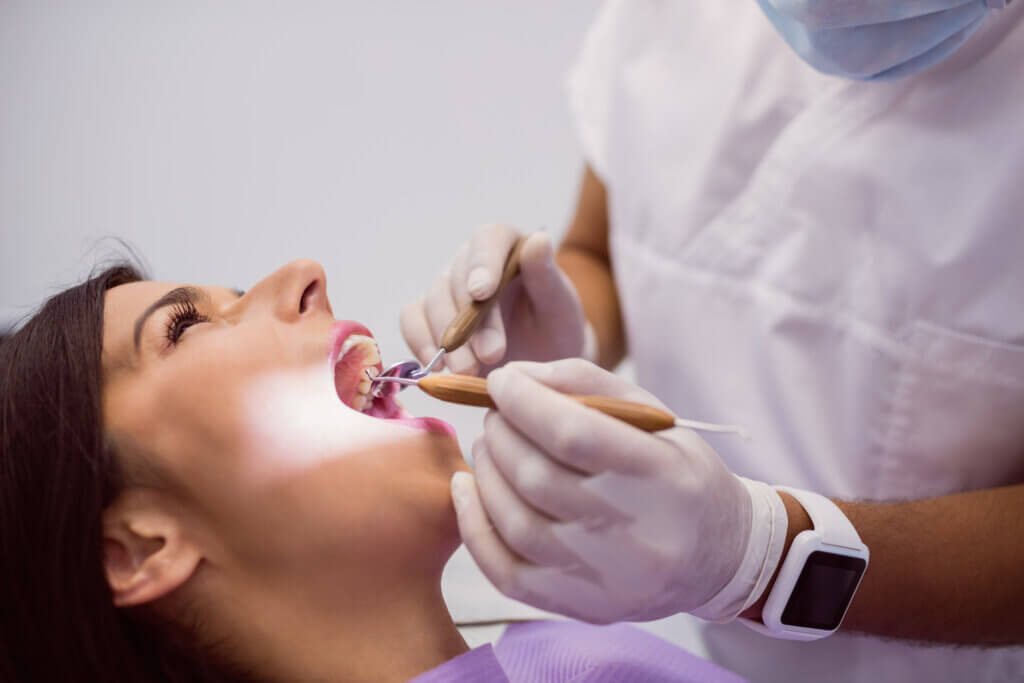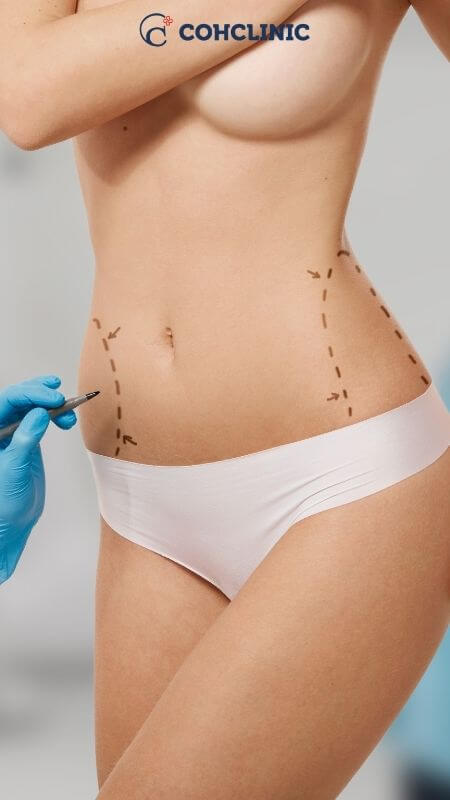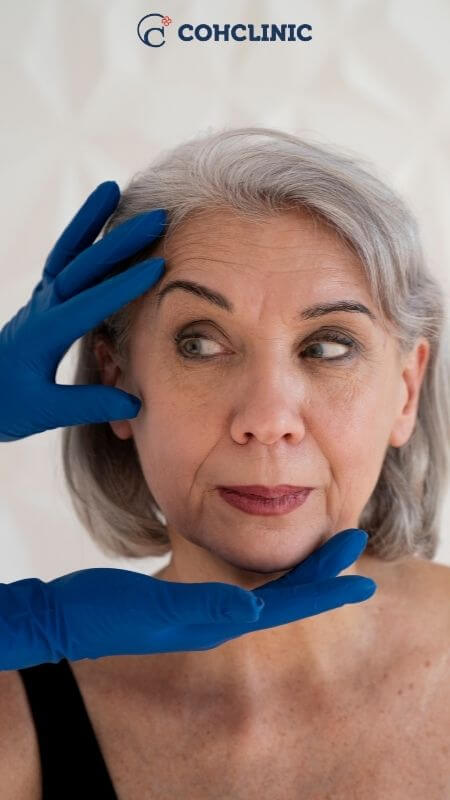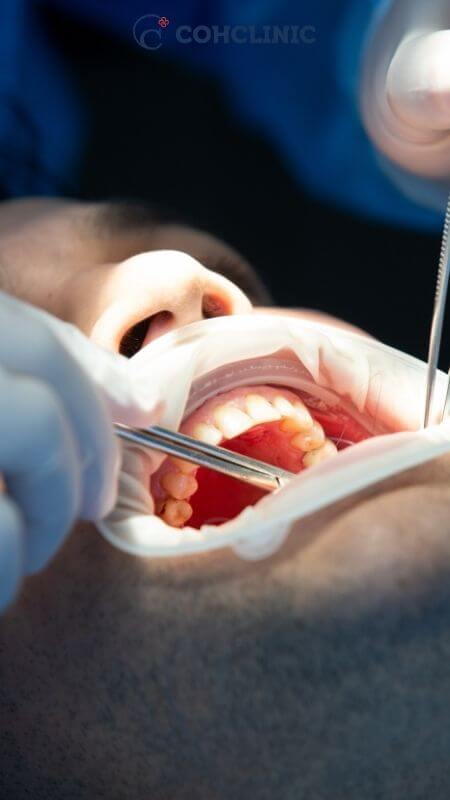Periodontology represents the specialized field of dentistry primarily concerned with addressing ailments impacting the supporting structures of the tooth, encompassing the gingiva (gums) and alveolar bone. Among the conditions commonly treated by periodontology, two prevailing issues are gingivitis and periodontitis.
Gingivitis denotes a reversible condition that primarily affects the gums. However, if left unattended, this condition can progress into periodontitis. Periodontitis, also known as pyorrhea or periodontal disease, constitutes an inflammatory disorder targeting the deepest layers of the periodontal tissues, which include the cementum root, periodontal ligament, and alveolar bone.
What is periodontitis?
Periodontitis represents a severe type of gum disease, stemming from a bacterial infection that initiates inflammation in the soft tissues encircling the teeth. Neglecting treatment, gradually corrodes the bone structure responsible for upholding the teeth, ultimately resulting in tooth mobility and subsequent loss.
What are all the causes of periodontitis?
The primary catalyst for periodontitis is inadequate oral hygiene. Bacteria adhere to plaque and tartar on the tooth surface. Insufficient or irregular dental care allows bacteria to infiltrate below the gum line, beyond the reach of regular brushing and flossing. These detrimental bacteria progressively degrade the supportive tissues around the teeth, leading to infections, bone deterioration, and eventually, tooth loss.

Moreover, several other factors can heighten the likelihood of developing periodontitis, which include:
- Smoking, a significant contributor, compromises the body’s ability to combat infections.
- Individuals with diabetes are at an elevated risk of contracting infections, including periodontitis.
- Genetic predisposition and family history may amplify the vulnerability to gum disease.
- Hormonal fluctuations in women, including during pregnancy or when using birth control pills, can escalate the susceptibility to periodontitis.
- Health conditions triggering systemic inflammation, such as arthritis, COVID-19, and cardiovascular disease, have been correlated with the onset of periodontitis.
Periodontitis Symptoms
Healthy gums are characterized by their firmness and snug fit around teeth. The color of healthy gums can vary, ranging from light pink to dark pink and brown in different individuals.
Symptoms of periodontitis may include:
- Swollen or puffy gums.
- Gums that appear bright red, dark red, or dark purple.
- Presence of pus between teeth and gums.
- Loose or loss of teeth.
- Painful chewing.
- Tenderness in the gums upon touch.
- Easy bleeding of the gums.
- A toothbrush that shows a pink tint after brushing.
- Gums pulling away from teeth, causing teeth to appear longer (receding gums).
- Spitting out blood while brushing or flossing.
- Persistent bad breath.
- Formation of new spaces between teeth resembling black triangles.
- Changes in the way teeth fit together when biting.
Periodontitis vs. Gingivitis
From a technical perspective, gingivitis and periodontitis represent distinct stages of periodontal (or gum) disease. When experiencing gingivitis, the initial form of gum disease, one might observe inflamed, red, swollen, and bleeding gums. During this phase, the infection remains reversible.
Conversely, periodontitis is a considerably more advanced condition characterized by the formation of deep pockets between teeth, allowing for the accumulation of plaque and food debris. This results in heightened inflammation, increased tenderness in the gum tissue, gum recession, and the development of dark red or even purple gums. Over time, periodontitis can lead to the degradation of the bone tissue responsible for securing teeth in place. Consequently, periodontitis stands as the primary cause of tooth loss.
Beyond being more severe than gingivitis, periodontitis is not reversible in the same manner as gingivitis. Once affected, it requires meticulous management to prevent the recurrence of infection.
Periodontitis vs. Pulpitis
Pulpitis refers to the inflammation in the dental pulp caused by factors such as cracked teeth, cavities, and advanced periodontal disease. On the other hand, periodontitis involves the inflammation of the periodontium primarily triggered by bacterial infection. This fundamental contrast between pulpitis and periodontitis underscores the key difference between the two conditions.
Moreover, complications arising from pulpitis may include infection or the formation of an abscess. In contrast, complications stemming from periodontitis encompass recurrent gum abscesses, progressive damage to the periodontal ligament, ongoing loss of the alveolar bone, and the gradual recession of the gums.
Can periodontal be treated?
Treatment for periodontal diseases, such as periodontitis, varies depending on the severity of the condition. It may include anti-infective therapy, antibiotic treatment, or surgical procedures. The progress of the treatment is continually monitored and supported to ensure lasting results. The general steps involved in the treatment process are as follows:
- Assessment and Diagnosis: A thorough evaluation of the patient’s history, clinical findings, and diagnosis is conducted to determine the appropriate course of treatment.
- Consultation and Information: Patients are informed about the diagnosis and treatment options during consultations. Dentists also discuss the importance of healthy habits and provide information on potential interactions with other health conditions.
- Precautionary Measures: Protective dental interventions are undertaken as needed before or during the periodontal treatment process.
- Anti-Infective Treatment: Comprehensive procedures are performed to remove any deposits, biofilms, or tartar from the periodontal pockets.
- Antibiotic Treatment: In severe cases, systemic antibiotics may be prescribed in combination with anti-infective therapy.
- Evaluation of Progress: After a few months, the initial assessment of the periodontal condition is conducted to plan subsequent procedures and identify any additional issues. Surgical treatment may be recommended, followed by a re-evaluation of the results. Otherwise, supportive care is continued.
- Surgical Intervention: In some situations, surgical procedures within the periodontal pockets may be necessary. Dentists collaborate with patients to make informed decisions about the need for surgery.
How to prevent periodontal diseases?
Follow these guidelines to minimize the risk of developing or worsening periodontitis:
- Brush your teeth at least twice a day, preferably after each meal or snack.
- Opt for a soft toothbrush and replace it at least every three months.
- Consider the use of an electric toothbrush, which might be more efficient in eliminating plaque and tartar.
- Make it a habit to floss daily.
- Use a mouth rinse as recommended by your dentist to help minimize plaque buildup between your teeth.
- Schedule regular professional dental cleanings as advised by your dentist.
- Refrain from smoking or using tobacco products, as they can significantly exacerbate periodontal issues.
Are you seeking periodontal treatment in Istanbul, Turkey?
Feel free to contact the COH Clinic in Istanbul, Turkey, by dialing +90 (536) 934 6524. You can arrange an appointment with our skilled team of professionals at the clinic.
Frequently Asked Questions
Can periodontitis be cured?
Can periodontitis be cured?
Red, bleeding, painful gums, loose teeth, foul breath, and gum recession are common signs. Periodontitis cannot be cured but may be managed with adequate treatment and maintenance. This includes maintaining proper oral hygiene and scheduling regular dental cleanings at the intervals indicated by your dentist.
Can early periodontitis be stopped?
Can early periodontitis be stopped?
Treating periodontitis promptly helps prevent it from getting worse. Most of the time, treatment is highly effective. See a dentist frequently if you have periodontitis to make sure the condition doesn't worsen.
Can I treat periodontitis on my own?
Can I treat periodontitis on my own?
Upon receiving a professional diagnosis of periodontitis, the condition necessitates treatment by a dentist, often requiring multiple appointments.
Will gums grow back after periodontitis?
Will gums grow back after periodontitis?
In straightforward terms, receding gums cannot regrow once damaged, such as in the case of severe gum disease like periodontitis. Nevertheless, while the reversal of receding gums is not possible, there are treatments available that can effectively halt the progression of the issue.
How long will my periodontitis last?
How long will my periodontitis last?
Since gum disease cannot be reversed, once gingivitis has progressed and you are diagnosed with gum disease, the consequences will last a lifetime. On the other hand, periodontal disease is curable and manageable when at-home and surgical therapies are combined.
Can you live a normal life with periodontitis?
Can you live a normal life with periodontitis?
If you treat periodontal disease and follow your dentist's advice, you can live a long life with the illness.
Do you lose all your teeth with periodontitis?
Do you lose all your teeth with periodontitis?
Pockets form in the gums when bleeding and inflammation in your gums cause your teeth to gradually drift apart. Bacteria enter these gaps and eat away at the bone and gums. Tooth deterioration and finally tooth loss result from this. It can just impact a few teeth or the whole mouth.
What does periodontitis look like?
What does periodontitis look like?
The color of healthy gums varies among individuals, ranging from light pink in some to dark pink and brown in others. Symptoms of periodontitis may manifest as swollen or puffy gums, as well as gums appearing bright red, dark red, or dark purple.
How painful is periodontitis?
How painful is periodontitis?
The majority of the time, chronic periodontal disorders like gingivitis and periodontitis are painless; but, because of inflammation or low-grade infections, they can occasionally produce moderate, intermittent, or persistent dull discomfort. On the other hand, acute periodontal discomfort is frequently linked to severe inflammation and infection.
What happens if you ignore periodontitis?
What happens if you ignore periodontitis?
When periodontitis goes untreated, oral bacteria cause irritation and damage to the tissues beneath the gum line. Additionally, the bacteria stimulate the body's immune system, which leads to the breakdown of the bone and supporting tissues for the teeth.
Can teeth recover from periodontitis?
Can teeth recover from periodontitis?
While gum disease is not curable, it can be managed effectively with proper care. Healing is not possible because the structural support surrounding your teeth, once lost, is typically not fully regained. On the other hand, periodontal therapy can lessen infection and partially restore your bone and tissue. Genetics is another component.







